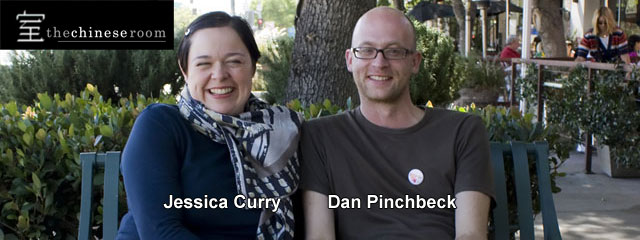
(original photo here)
After wondering for a bit on why won’t a finally buy a webcam and start trying to interview different game developers I made the only right decision – bought a webcam and tried to interview a game developer. The first “victim” of my complete lack of knowledge on Skype talks was Dan Pinchbeck, creative director of thechineseroom, who has recently released their first commercial game – Dear Esther. Originally released as a source mod in 2008, it changed perceptions of lots of people about what can be done with a videogame medium. And recent commercial release, done in collaboration with incredibly talented level designer and environment artist Robert Briscoe, allowed Dear Esther to be known to a bigger audience.
Given my admiration for the game (and work on the Russian translation for it), it’s not surprising that I was interested in knowing one of the key people behind the project better. And while video quality, and my embarrassingly nervous talk and unexpectedly bad accent (because of long inexperience period, I’m a good translator otherwise, honest -_-) prevent you from seeing the recording of our talk, you can still read it.
In this first part, we talk about the unexpected success of Dear Esther, other early experiments, what makes horror games great and why Amnesia was an amazing game, the importance of interface and health counters and what we both love and hate with game hints and tutorials.
Read more“Dear Dan. Talking with Dan Pinchbeck. Part 1”
